Massage Therapy Business Tips
October 6, 2025
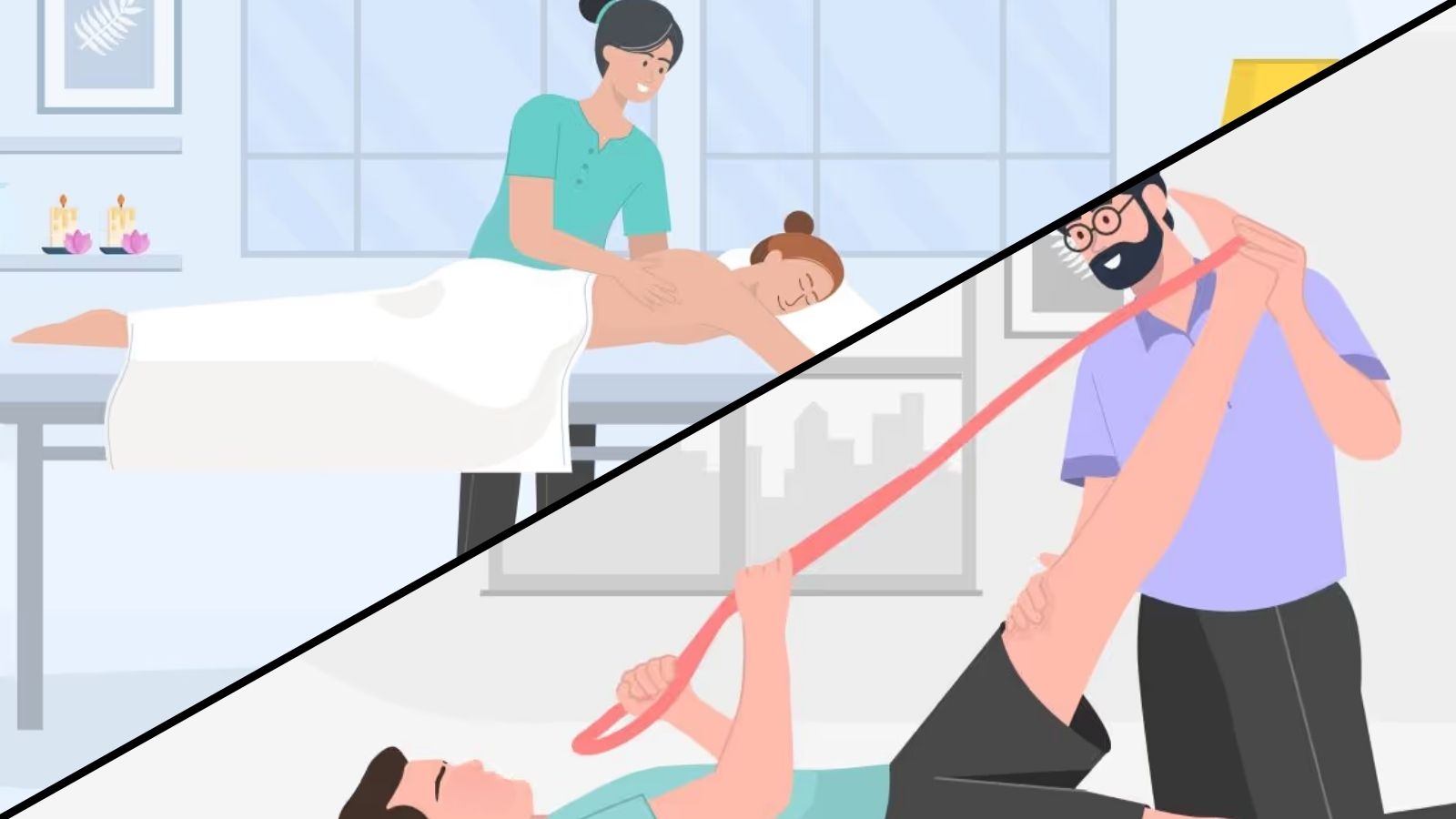
Massage and assisted stretching serve different purposes, but both can help clients feel and move better. Massage is ideal for pain relief, stress reduction, and recovery, while assisted stretching focuses on flexibility, posture, and range of motion. Many practitioners find the best results come from combining the two: massage relaxes the muscles and stretching helps lock in mobility gains.The right choice depends on what the client needs most, how often they can come in, and the flow of the session. Together, they create a balanced strategy for lasting comfort and better movement.
Clients often ask about stretching vs massage, and the truth is both have unique benefits. Massage is a powerful tool for pain relief and recovery, while assisted stretching supports long-term mobility and flexibility. As a practitioner, knowing when to recommend one over the other, or how to combine them, helps you deliver better results for clients while also expanding your service offerings and growing your practice.
Assisted stretching is a service where a practitioner gently guides a client’s muscles and joints through targeted stretches. The therapist adds support and light resistance, which helps the client move safely beyond what they could do on their own.
Massage therapy is the manual manipulation of muscles and soft tissues to reduce tension, relieve pain, and promote relaxation. A therapist uses techniques like kneading, pressure, and gliding strokes to improve circulation and ease discomfort.
Massage therapy covers a wide range of approaches, from popular massage modalities like Swedish or deep tissue to focused services such as lymphatic drainage massage.
Massage and assisted stretching are most powerful when used together to meet multiple goals. Massage addresses pain, tension, and recovery, while stretching improves mobility and flexibility. For clients who want both immediate relief and long-term results, combining the two creates a balanced approach.
The sequence should match the client’s goals while maintaining the flow and overall intent of the treatment.
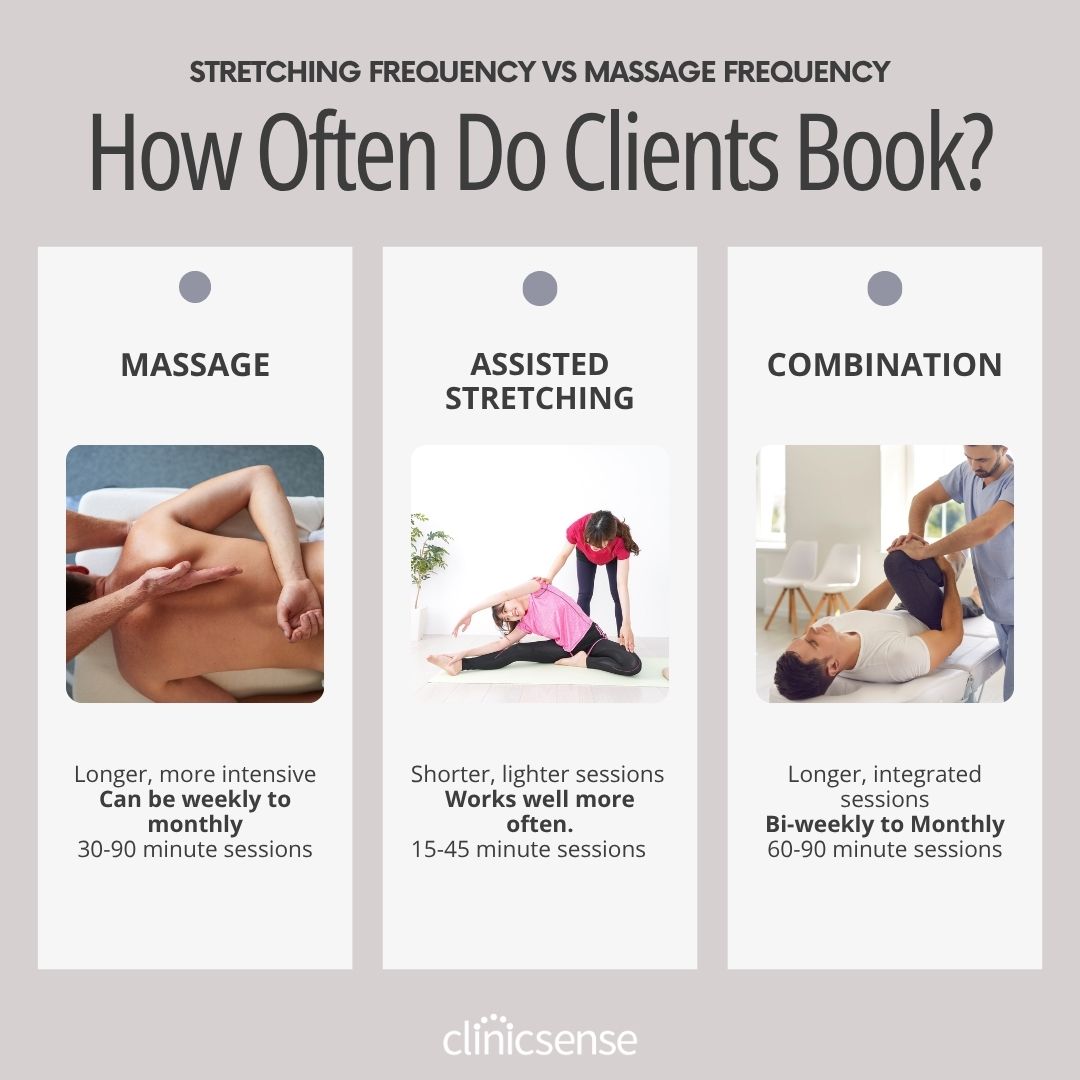
Massage addresses pain and tension, while assisted stretching targets flexibility and mobility. When you weigh the benefits of massage therapy against the advantages of stretching, the right choice often comes down to client goals and lifestyle. Often the client needs both.
Learning how to articulate the benefits of massage alongside assisted stretching gives you the tools to guide clients toward the services that will help them most.
Massage and assisted stretching aren’t right for every situation. Both should be avoided or modified in cases such as:
Therapists should always screen clients and adjust or postpone sessions as needed.
Assisted stretching helps clients go deeper into stretches than they could on their own, with the added safety and guidance of a trained practitioner. Over time, this can improve overall mobility and make daily activities feel easier.
Many people find that regular assisted stretching sessions make them feel looser, move more freely, and stay active with less discomfort.
For many therapists, adding assisted stretching can be a natural extension of the work you already do. It gives you another way to support clients who want improved mobility, not just pain relief, and it can help you stand out in a competitive market. In fact, the benefits of assisted stretching go beyond flexibility. They can expand your client base and strengthen your business.
If you’re already helping clients manage tension and improve function, assisted stretching may be the next step. It’s also one of the massage specializations people are talking about, giving you a way to expand your skills and meet growing client demand.
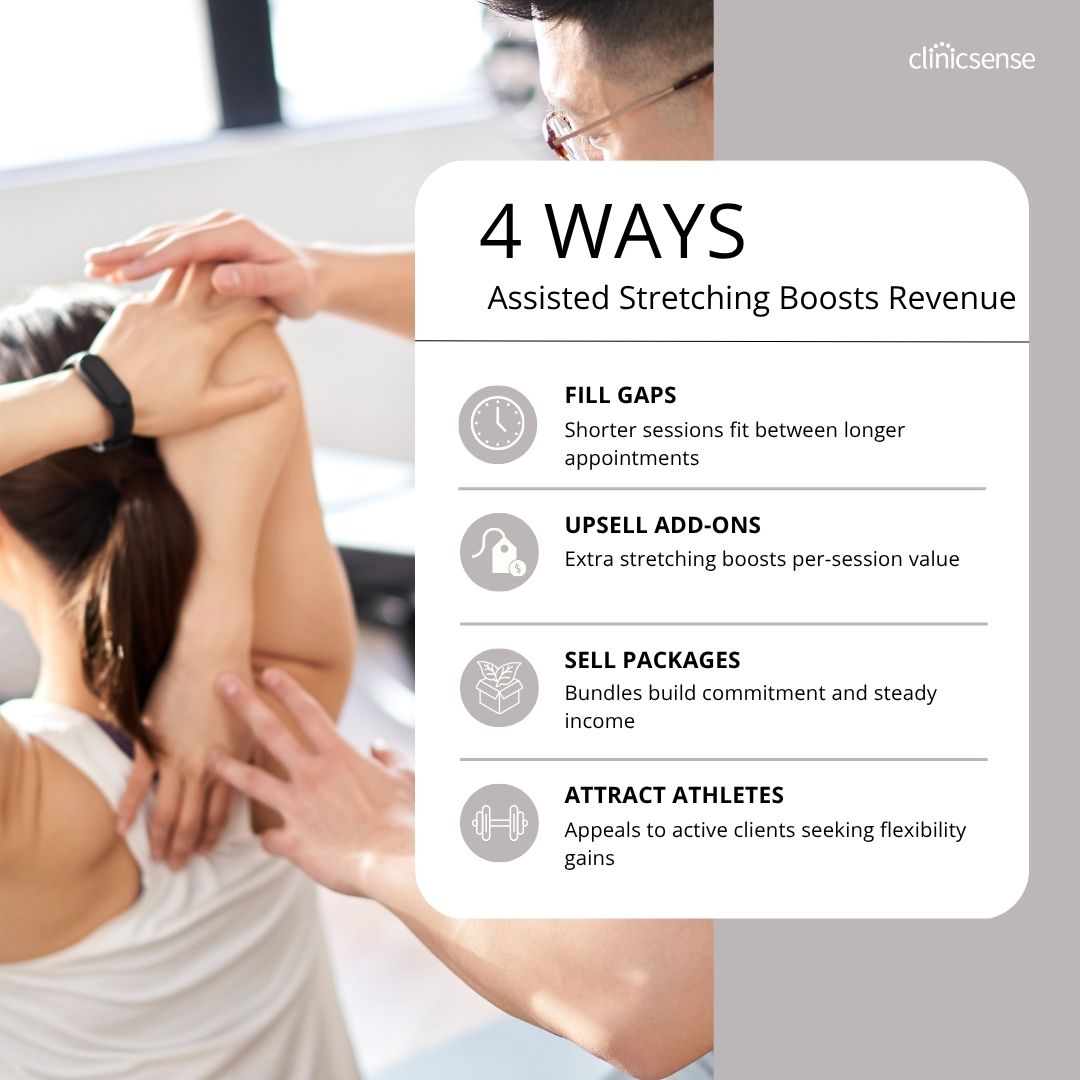
You can do assisted stretching before, during, or after a massage, or as a standalone service. When combined with massage, it’s best to gradually incorporate stretches during or after the session, as massage warms up the muscles and makes the tissue more pliable, enhancing flexibility and relaxation.
Offering both massage and assisted stretching doesn’t have to complicate your practice. With ClinicSense, you can manage scheduling, documentation, and client communication in one place.
Make it simple for clients to choose the service that fits their needs. Offer options like “Stretch 30,” “Massage 60,” or a combo session. You can also set up add-ons so clients can easily book extra time for stretching alongside a massage.
Screen for contraindications with digital intake forms. Clients complete their health history online before the session, so you have the information you need to tailor treatment safely.
Track range of motion goals and note how stretching and massage are working together. Build treatment plans that keep clients on track and document progress over time.
Encourage consistency and commitment by bundling services. With ClinicSense, you can easily create and sell treatment packages such as mobility-focused blocks, in-season care, or ongoing maintenance plans. Explore more massage package ideas to see how you can boost retention and provide greater value to clients.
Reduce cancellations and no-shows with automated reminders. No-Show Guard™ adds extra protection by automatically charging for last-minute cancellations based on your cancellation policy. Plus it comes with a free cancellation policy template so you know how to write a massage cancellation policy.
Collect payments at checkout, track invoices, and, if you’re in Canada, offer direct billing to make the process easier for clients.
Give clients a seamless experience with a secure portal where they can reschedule appointments, access forms, and download receipts at their convenience.
Whether your clients need pain relief, improved mobility, or both, offering massage and assisted stretching side by side can help you deliver better results. And with ClinicSense, it’s easy to manage both services in one system.
Start your free trial today and see how simple it is to grow your practice with the right tools.

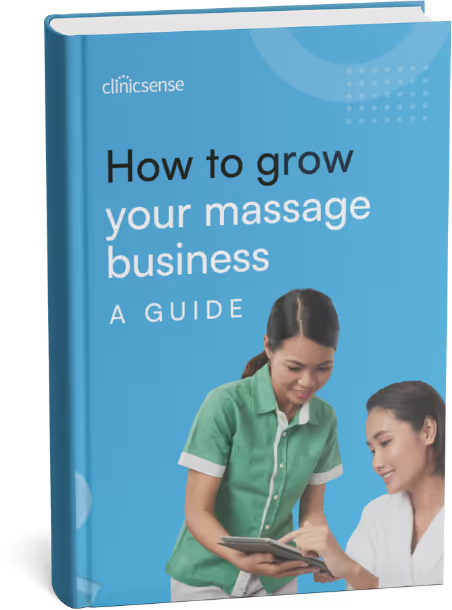
.avif)
.avif)
.avif)
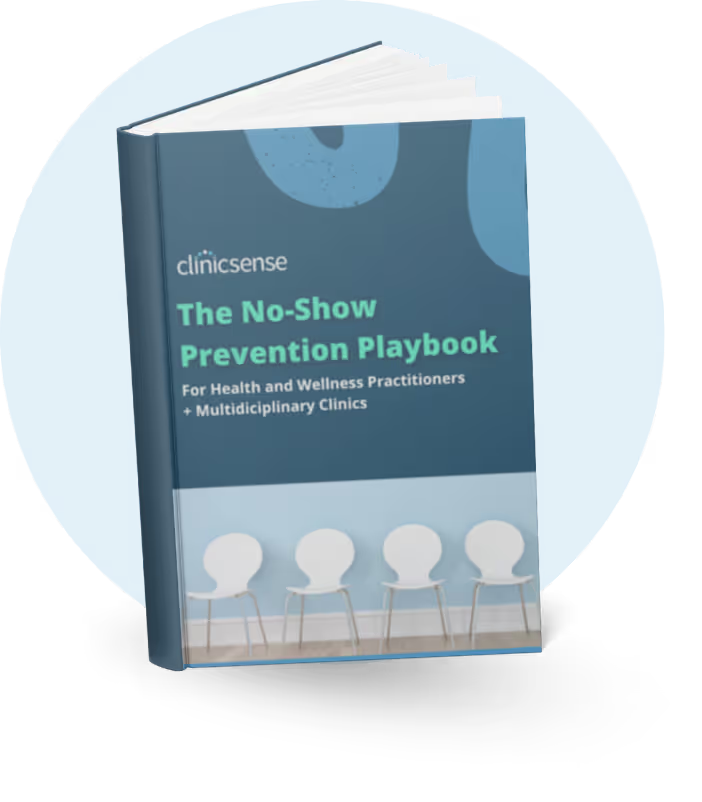

No. Massage uses hands-on pressure to release tension and ease pain, while assisted stretching involves guided movements to improve flexibility and range of motion. They complement each other but serve different purposes.

It depends. Massage often gives immediate relief from pain and stress, while stretching results build over time with consistency. For lasting benefits, many clients use both together.

Yes. Most often, stretching is done during or after massage, when muscles are warm and relaxed. In some cases, stretching comes first for logistical reasons or sport-specific goals.

Stretching can be scheduled more frequently because sessions are shorter and less demanding. Massage is usually booked weekly, biweekly, or monthly depending on goals. Many clients alternate between the two.

Not really. Stretching is great for mobility, but it doesn’t address pain, tension, or stress in the same way massage does. Most clients benefit from using both rather than replacing one with the other.

The combination delivers both immediate relief and long-term results. Massage loosens muscles and improves circulation, while stretching extends range of motion. Together, they create a balanced plan for comfort and mobility.


For 14 days